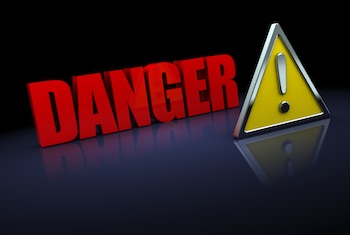
With the New York Toy Fair around the corner, companies across the globe will soon be pouring in to see what new toys and youth entertainment products inventors have to offer. As business owners prepare to roll out their new products, it’s important to make sure that their company is best situated for success. While engaging in a manner most likely to lead to success is critical for any company, it is even more important for toy entrepreneurs for a variety of reasons. Unfortunately, all too frequently costly mistakes are made. Here are five mistakes that I see toy companies make far too often.
Mistake 1:
Underestimating The Importance Of Intellectual Property
Most toy companies don’t spend enough time focusing on their Intellectual Property, mainly because they think it is just a legal matter. Often, companies will spend too much of their time creating a product and working on its execution, and too little time on thinking about how to protect what they are creating.
Intellectual Property can turn into your best asset, but only if you plan ahead. As companies build their brand, they fail to realize that patents, copyrights and trademarks will protect and ensure their brand for the long run. Valuation experts estimate that intellectual property represents the largest asset class held by American companies (representing 40 percent of the value of all assets). Companies need to stop thinking about IP as just a legal issue, and understand it is as a business issue. The right intellectual property protection can create tremendous value. Considering that intellectual property assets represent such a large asset class, it needs to be included in your business plan. Do not assume you can circle back later. With many forms of intellectual property protection you need to act early or opportunity will be lost.
Mistake 2:
Determine What You Need
Many toy companies struggle to determine exactly what they need. First, you need to decide whether you need a patent, a trademark, or both. Patents are for new or improved products (including both devices and games), while trademarks are for any slogan, word, name, symbol or device intended to be used to identify the product. Each process is different and requires separate fees, so determine what you need first if your budget is tight. Trademarks cost less than patents, design patents cost less than utility patents, and design patents are quicker and easier to get, and sometimes enough (at least to start).
And don’t forget copyrights. Copyrights are a trickier issue with toys since you cannot copyright something that has a function, but if you have a game there may be aspects of what you have created that could be protected with a copyright. Copyrights won’t always be an option, but they are the cheapest to acquire and they last a very long time, so checking with an attorney specializing in intellectual property can be worthwhile. Such a professional can also help you decide what kind of patent you may want or need, if any.
Mistake 3:
Failing To Understand the Regulatory Framework
Legislation governing the safety of children’s toys continues to expand from a global perspective. For companies manufacturing and distributing toys worldwide, understanding and complying with these legal requirements can be a challenge but one that cannot be overlooked. Typically, legal measures governing toys prohibit the sale of noncompliant products and impose some combination of product design requirements, restrictions on the use of various metals and chemicals, as well as product labeling, testing and certification requirements. The failure of companies to assess and adhere to the growing legislation will present significant legal and reputational risks. A consultation with an attorney who specializes in regulations associated with products for children can save you dearly.
Mistake 4:
Failing To File For A Trademark
One of the ultimate ironies is that many toy companies spend most of the time coming up with the perfect name for their company but then don’t take the necessary steps to secure that name. Usually, companies either fail to run a trademark search or wait too long to file the trademark. The best time to discover a trademark issue for your name of choice is at the outset because any conflict can easily be resolved by picking a new name; and trust me while that may not seem desirable in the long run it will save you a lot of time and money.
Companies who don’t take the time to run a trademark search for their name are running significant risks. In the greater scheme of this business endeavor a trademark search is not all that expensive, and knowing you have solid rights to the name will save you many headaches, and legal bills, later.
Many companies who do pursue a trademark will wait too long to file their trademark. As soon as a company decides on a name, they should file a trademark application. While you may have read that you cannot file a trademark application without already using the trademark in business, that isn’t exactly correct. You can file what is called an “intent to use” application even before use starts. Eventually you will have to start using the trademark, but if you fall in love with a name before you are doing business this is an option to consider. And if you are already using the trademark in your business you need to file right away because it can take up to a year to process an application.
Business owners will spend significant time and money building a brand around their company name without being sure that they will actually be able to continue using the name for the entire life of the business. In the process, the company will lose its brand awareness and the value of the built-up goodwill. Don’t let that be you.
Mistake 5:
Keeping in Mind the Product’s Shelf Life
The toy industry runs in cycles. You may introduce your toy in February at the Toy Fair, or wait to launch before the holiday season. In any event, your window to attract consumers and keep your competitors at bay is short – particularly if the design can be replicable. Unfortunately, the Patent and Trademark Office, and the Copyright Office, doesn’t care about your marketing plans. The average time for the Patent Office to grant a design patent is about one year. You should expect about two or three times that amount of time to get a utility patent. The Copyright Office will typically register your copyright about six months after you file the application. And trademarks are usually registered in about a year. But with the guidance of an intellectual property lawyer, the process can be accelerated to some degree.
Why does this matter? If you go to market, or to a trade show or toy fair, without any protection and your toy or game is a success you can expect there will be knock-offs enter the market. Without any protection in place you will have very little recourse. But as we have seen in the past, if a knock-off product is being displayed at a trade show and you have valid intellectual property protection it is possible to quickly get a Temporary Restraining Order and even a seizure. That is exactly what happened in January 2016 when a hoverboard knock-off was being offered at the 2016 Consumer Electronics Show.
The Copyright Office provides for expedited handling that can reduce the time to obtain a registration to a few weeks. If you need to get a patent quickly there are procedures to expedite, although they can be somewhat expensive. Still, a design patent takes about 1 year (sometimes less, sometimes more) to obtain. But when time is of the essence, as it frequently is with toys and games given the competitiveness of the industry and the cycles, having a professional navigate the process can and does help significantly.

![[IPWatchdog Logo]](https://ipwatchdog.com/wp-content/themes/IPWatchdog%20-%202023/assets/images/temp/logo-small@2x.png)

![[Advertisement]](https://ipwatchdog.com/wp-content/uploads/2024/04/Artificial-Intelligence-2024-REPLAY-sidebar-700x500-corrected.jpg)
![[Advertisement]](https://ipwatchdog.com/wp-content/uploads/2024/04/Patent-Litigation-Masters-2024-sidebar-700x500-1.jpg)

![[Advertisement]](https://ipwatchdog.com/wp-content/uploads/2021/12/WEBINAR-336-x-280-px.png)
![[Advertisement]](https://ipwatchdog.com/wp-content/uploads/2021/12/2021-Patent-Practice-on-Demand-recorded-Feb-2021-336-x-280.jpg)
![[Advertisement]](https://ipwatchdog.com/wp-content/uploads/2021/12/Ad-4-The-Invent-Patent-System™.png)






Join the Discussion
3 comments so far.
S. Husain
February 20, 2017 04:10 am@ Benny: I am personally not a fan of lawyers, and although I have not yet acquired the services of any patent lawyers, I do intent to hire Andrew Rapacke. During my own research, I found his firm and him, especially, very sincere about “what is” and “what is not” applicable for my situation and finding the most economical solutions. In the end lawyers in general are out there for making as much money as they can, but there are exception to that rule.
You are also right that CSPC is full of very knowledgeable people who are happy to help or to provide required information.
Frank Lukasik
February 13, 2017 06:58 amI did all of the above. Kids love my Stealth Origami (TM) airplane. My web site and everything else are for sale.
Benny
February 13, 2017 05:14 amMistake number 3: “A consultation with an attorney who specializes in regulations associated with products for children can save you dearly”
An attorney? Seriously? You need to consult the experts at the approved safety certification laboratories. They have they experience, knowledge, and access to the relevant safety standards for all your markets. Don’t think you’ll find any attorneys there.